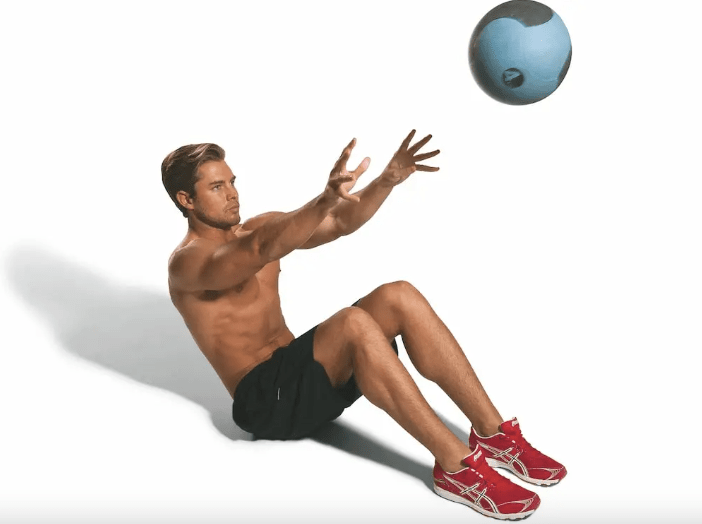When it comes to sculpting your abs, all you really need are bodyweight exercises and an exercise mat, before introducing extra resistance. Whether you’re a complete beginner to core work or a practiced pro, our roundup of the best abs exercises has got you covered.
Ask most men what body part they most wish to improve and their abs will feature high on the list. A rock-hard six-pack not only looks good but proves you take training seriously and know what you’re doing by burning excess body fat and building hard, lean muscle mass.
Some people think that the best way to build a six-pack is to do endless crunches. If they were right, this article would be incredibly short.
The reality is that you need the best abs exercises to work all your abdominal muscles – the deep-lying transversus abdominis, the internal and external obliques and the rectus abdominis, the muscle that makes up the visible six pack.
Of course, if your body fat levels are too high, you won’t be able to see your six-pack, so you need to combine effective abs exercises with a healthy diet and – to lose body fat – a moderate calorie deficit.
Without further ado, here are the best abs exercises to help you target your abdominal muscles.
Why you can trust the workouts in Men’s Fitness
At Men’s Fitness we pride ourselves on delivering information that serves a singular purpose: to improve some aspect of your health, fitness or wellbeing. For over 16 years, we’ve been publishing authoritative health and fitness content – written by our expert editors and contributors. Each of our workouts has been created and tested by either a highly experienced editor or expert contributor. Find out more about how we test.
These are the best abs exercises
- Barbell rollout
- Modified V-sit
- Reverse crunch
- Dumbbell crunch
- Star side plank
- Medicine ball crunch and throw
- Walkout
- Gym ball rollout
- Standing band fall-through
- Hanging leg raise
- Bicycle crunch
- Jackknife
- Gym ball side plank
1. Barbell rollout
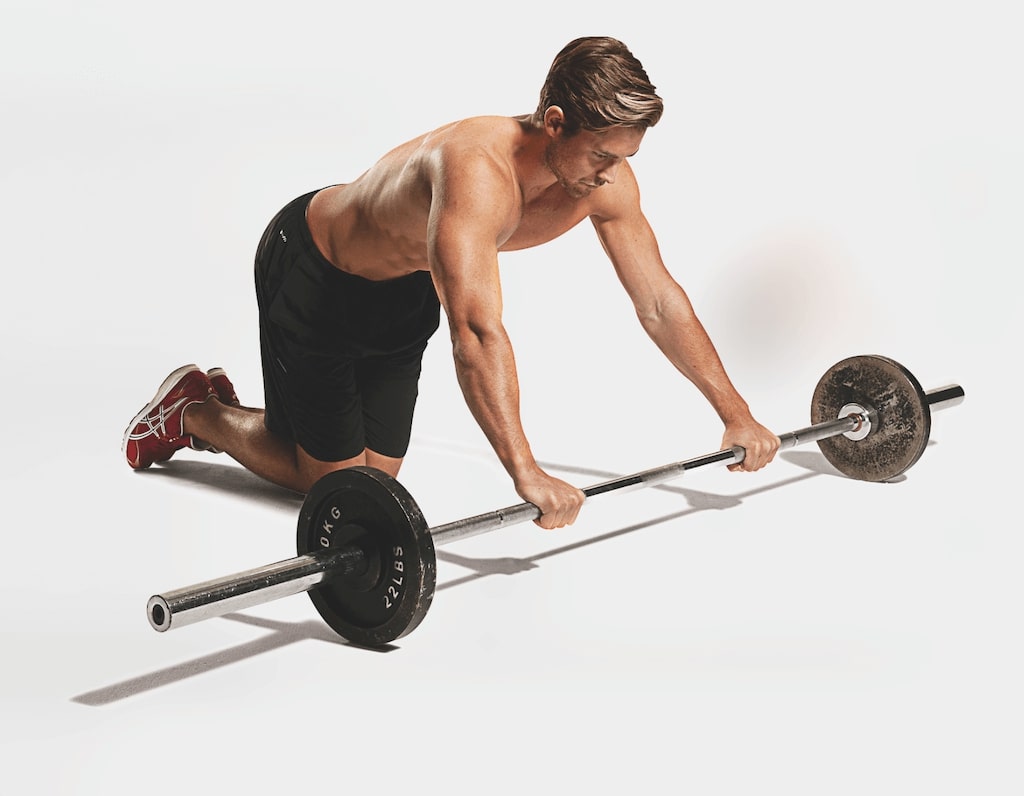

| Recommended reps | 6 |
| Recommended sets | 4 |
Why we like the barbell rollout:
When it comes to abs training, sports and conditioning coaches don’t see eye to eye with physique-focused trainers. Sports coaches are wary of isolation moves and conventional abs exercises that have little application on the field.
One of the few abs exercises that both camps love, however, is the rollout. This is because it packs a lot into one move: working the whole kinetic chain (your muscles, bones and nerves), and requiring stability at the end of the range of movement and strength to get back to the start position.
How to do the barbell rollout:
- Start by kneeling on the floor with your hands on the bar, below your shoulders and just wider than shoulder-width apart
- Your spine should remain in a neutral position throughout the move
- Contract your abs and slowly roll the bar away from you, making sure you don’t let your hips drop and your back hyperextend
- When you can’t go any further without compromising good form, roll the bar back to the start
Abs advice: Keep your core braced for the duration of the exercise.
We think this Phoenix Fitness 20kg Barbell Set is great value:
2. Modified V-sit


| Recommended reps | 12 |
| Recommended sets | 4 |
Why we like the modified v-sit:
Time under tension is important for building muscle, and there’s no better way to keep your abs under pressure for an extended period than with a controlled v-sit.
The full version requires good hip flexibility, but this modified version can be done by anyone and works your obliques, hip extensors and balance as well as the abdominals.
Stay fractionally off the ground between reps – it’s tough, but you’ll see the benefits.
How to do the modified v-sit:
- Lie flat with your arms by your sides and your feet together just off the floor
- Sit up and extend your arms forward while at the same time bringing your knees in to your chest
- Slowly return to the starting position
Abs advice: Hold for 2 secs at the top of each rep for optimal muscle activation.
3. Reverse crunch

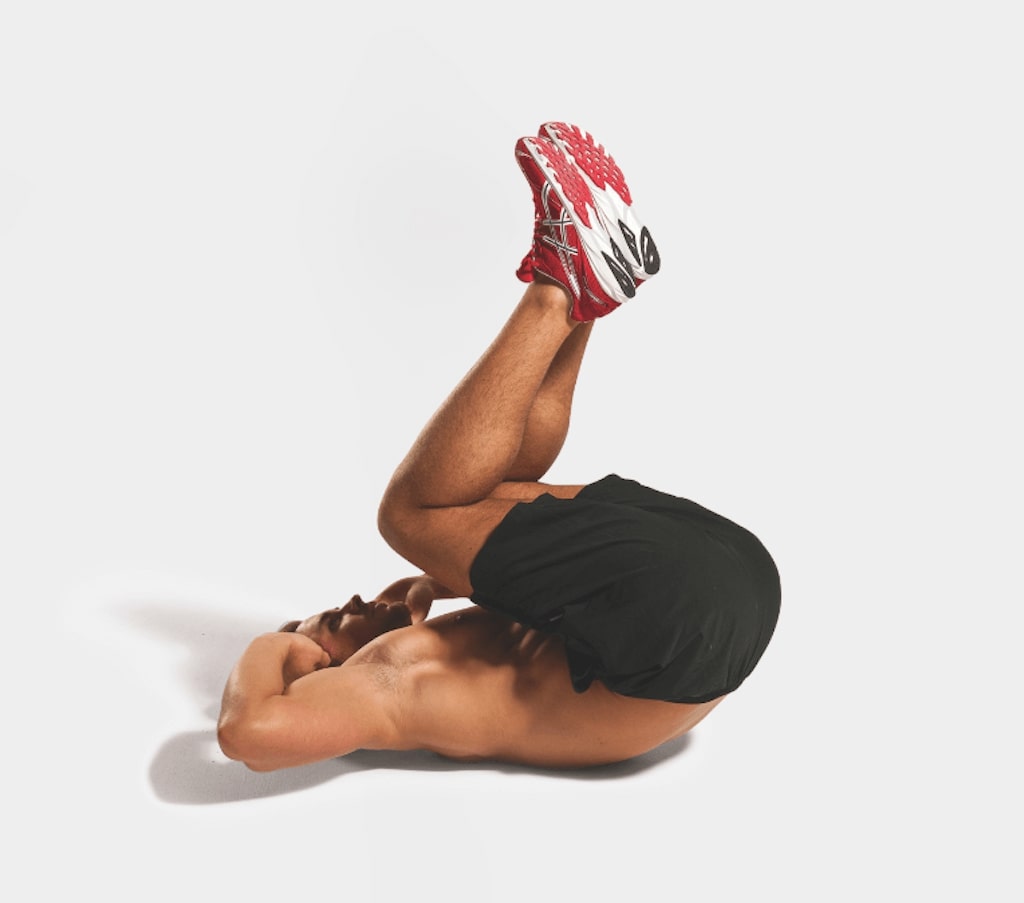
| Recommended reps | 12 |
| Recommended sets | 4 |
Why we like the reverse crunch:
If you’ve been training your abs hard with crunches, you’ve probably already built a two-pack. But if you fail to include any lower abs exercises into your workout regime, all you’re doing is ensuring that your two-pack never spreads south and turns into a solid set of six.
The reverse crunch specifically targets your lower abs so you can complete your rock-hard core.
How to do the reverse crunch:
- Start with your head and shoulders flat on the floor with your fingertips at your temples, your knees bent at 90 degrees and your feet flat on the floor
- Contract your abs to lift your hips, then curl your knees towards your chest, keeping them bent at 90˚
- Pause at the top, squeezing your abs, then lower your legs slowly back to the start
Abs advice: Lower your legs under control to maintain time under tension.
4. Dumbbell crunch


| Recommended reps | 12 |
| Recommended sets | 4 |
Why we like the dumbbell crunch:
Are you doing crunches until the cows come home but still finding you haven’t sculpted the perfect six-pack? The chances are you’re not working your abs hard enough. Like every other muscle group, they need increasingly heavy loads to keep growing.
The fix is simple: start adding extra weight to the crunch to force your abs out of their comfort zone so they have no choice but to strengthen.
How to do the dumbbell crunch:
- Lie on your back with knees bent, holding a dumbbell in each hand with bent elbows
- Contract your abs to lift your torso up, straightening your arms as your chest rises towards your knees to take the weights towards your feet
- Pause at the top of the move before lowering slowly back to the start
Try these Jordan Premium Urethane Dumbbells:
5. Star side plank

| Recommended reps | 15 secs each side |
| Recommended sets | 5 |
Why we like the star side plank:
You can’t underestimate the importance of having a solid core. Not only will it allow you to lift heavier in all the major lifts and move more effectively on the sports pitch, you’ll also have the foundations to build an impressive six-pack.
This upgrade on the plank will work your core and obliques – those muscles either side of your abs – really hard, as well as recruiting muscles in your shoulders and quads as you raise and straighten your arm and legs to form a star shape.
It’s a great (and under-used) move to build stability and strength across your body.
How to do the star side plank:
- Lie on your side, supported on one forearm with your elbow under your shoulder and one leg on top of the other
- Raise your hips off the ground to form a straight line from head to heels, then raise and straighten your arm and leg and hold
Abs advice: Once you can hold for 15 secs, try holding a light dumbbell in your raised hand.
6. Medicine ball crunch and throw
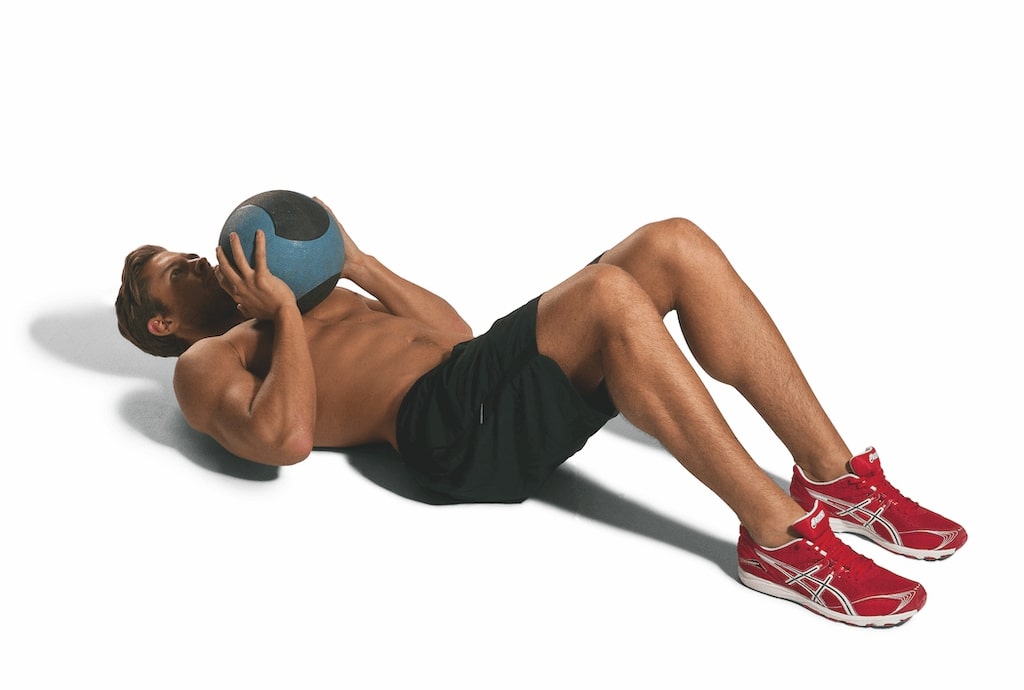

| Recommended reps | 12 |
| Recommended sets | 4 |
Why we like the medicine ball crunch and throw:
Doing crunches is a good start if you’re trying to build an impressive six-pack. But adding weight and explosive power to the move with the medicine ball crunch and throw makes for a tough and highly effective abs builder.
Not only are your abs forced to work harder to crunch your torso up with the extra resistance from the med ball and generate enough force to propel the ball forward, but they also need to keep your torso up so that you can receive the ball back.
How to do the medicine ball crunch and throw:
- Start flat on your back with knees bent at 90 degrees, holding a medicine ball with both hands against your chest
- Crunch up and powerfully push the medicine ball away from you towards a partner
- Hold at the top of the move as he passes the ball back, then lower back down and repeat
Abs advice: If you don’t have a training partner, chuck the ball into the air at the top of each rep, catch and repeat.
This METIS Fitness Slam Ball would be great for this exercise:
7. Walkout
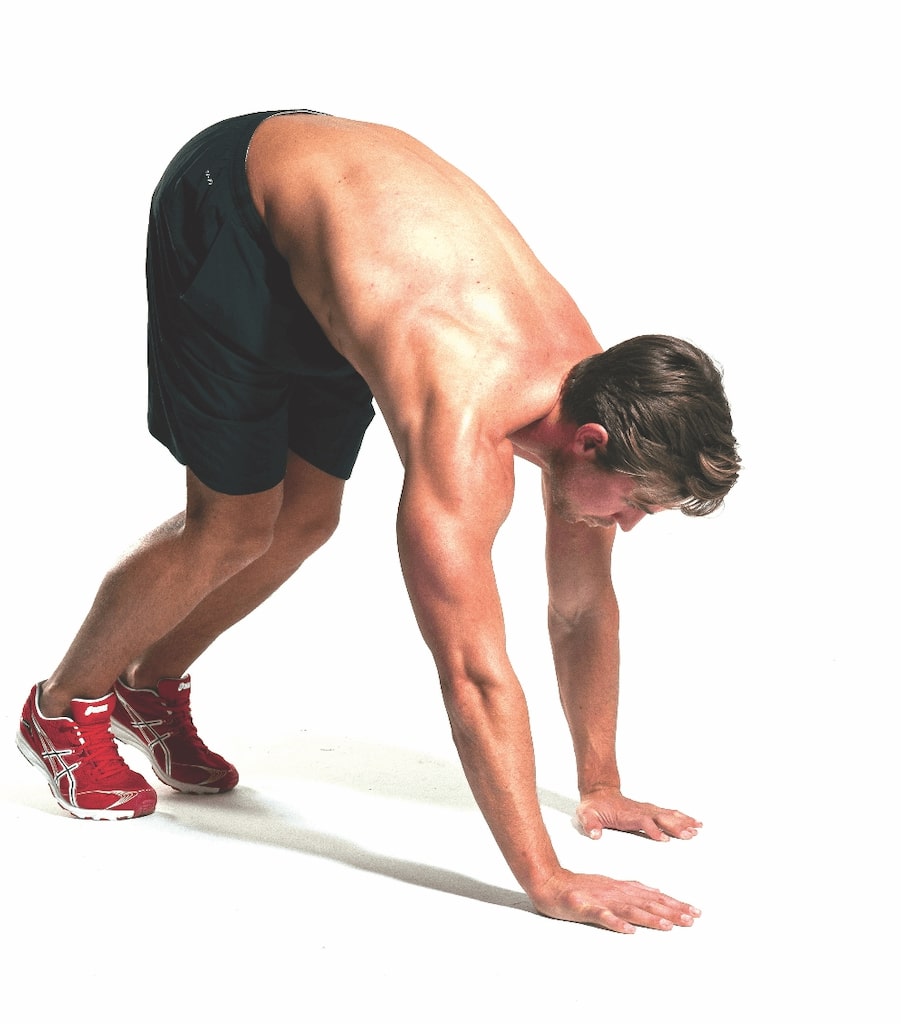
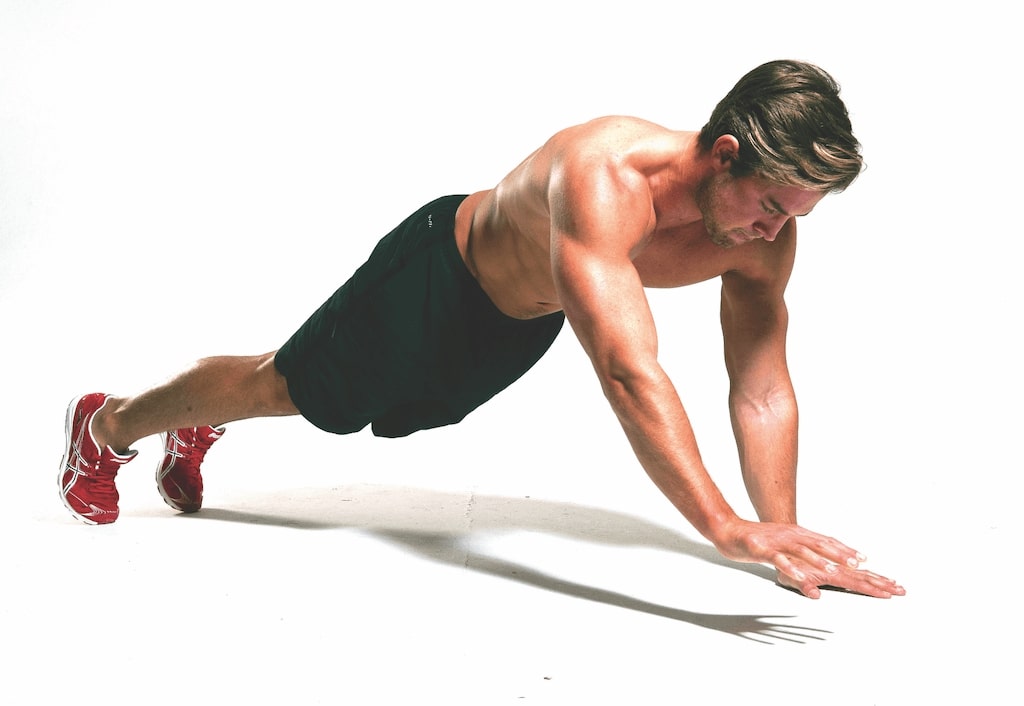
| Recommended reps | 8 |
| Recommended sets | 4 |
Why we like the walkout:
Being able to walk on your hands provides far more benefits that just being able to join the circus. This surprisingly tough abs move works your entire core region, as well as your shoulders, lats, chest and arms, making it a great exercise to build a strong, v-shaped upper body.
The key to the move is to not rush it: the slower you can do it, the longer you place these target muscles under tension so they have an effective stimulus to grow back bigger and stronger.
How to do the walkout:
- Bend from your hips so that your hands and feet are close together on the floor
- With your feet rooted to the spot, slowly walk your hands forward until your body forms a straight line from head to heels, then walk back to the start position
Abs advice: Make the move harder by holding a plank or doing press-ups at the bottom before walking back up to the start position.
8. Gym ball rollout
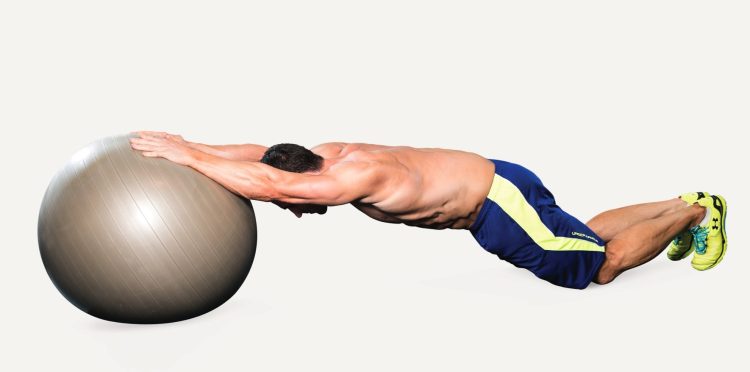
| Recommended reps | 10-12 |
| Recommended sets | 3 |
Why we like the gym ball rollout:
Using a gym ball keeps your arms closer to your torso, limiting the range of motion your abs are exposed to.
How to do the gym ball rollout:
- Start on your knees with your hands on the gym ball
- Slowly roll the ball away from your body, keeping your core braced throughout
- Once your torso is parallel to the ground, contract your abs to roll the ball back to the start
Abs advice: This is a good move to build core strength before you advance to more testing exercises such as the band fall-through.
The Pure2Improve Gym Ball is one of our favorite exercise balls:
9. Standing band fall-through
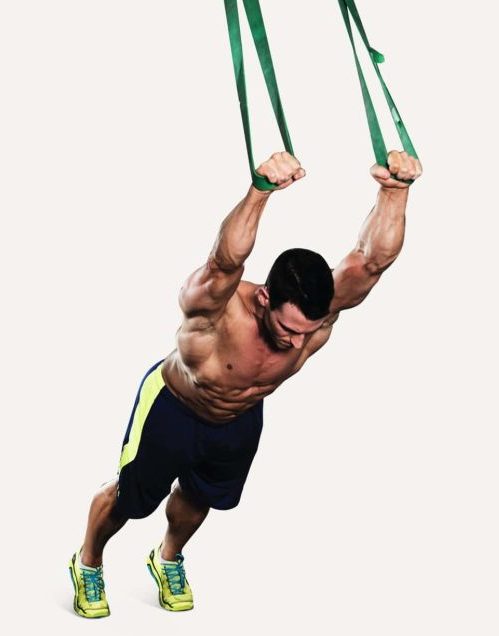
| Recommended reps | 10-12 |
| Recommended sets | 3 |
Why we like the standing band fall-through:
This is an ultra-effective abs move because there’s tension on your abs even in the start position. Starting each rep with your abs under tension ensures the muscles never get the chance to relax and switch off – in fact, they have to work increasingly hard throughout each individual rep and as the set progresses.
How to do the standing band fall-through:
- Attach resistance bands over pull-up handles and hold one in each hand
- Stand leaning forwards slightly so there is tension on your abs
- Keeping your body straight, lean forwards as far as you can go, maintaining tension on your abs throughout
- Hold the bottom position briefly, then contract your abs to return to the start position
Abs advice: Focus on tensing your abs as well to increase muscle stimulation so you recruit and train more fibres.
10. Hanging leg raise

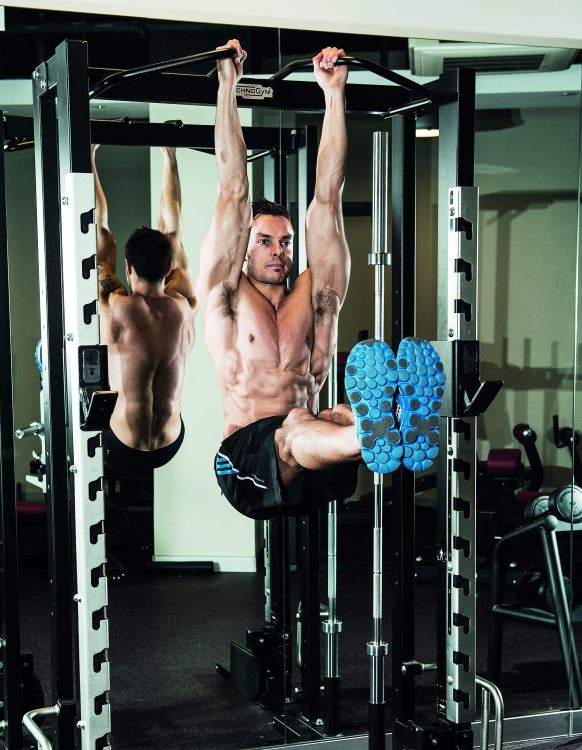
| Recommended reps | 10-12 |
| Recommended sets | 3 |
Why we like the hanging leg raise:
Any kind of leg raise exercise helps increase the flexibility, agility and strength of your hip flexors. The hanging leg raise is particularly effective at stabilizing the lower back, as well as developing the rectus abdominis and frontal oblique. It helps burn belly fat too, and as long as it’s done correctly and as part of a balanced program, it won’t strain your lower back and spine.
How to do the hanging leg raise:
- Hang from a bar with your body straight
- Keeping your legs straight, use your lower abs to raise them until they’re parallel to the floor
- Return to the start
Abs advice: Exhale as you perform this movement and hold the contraction for a second or so.
11. Bicycle crunch
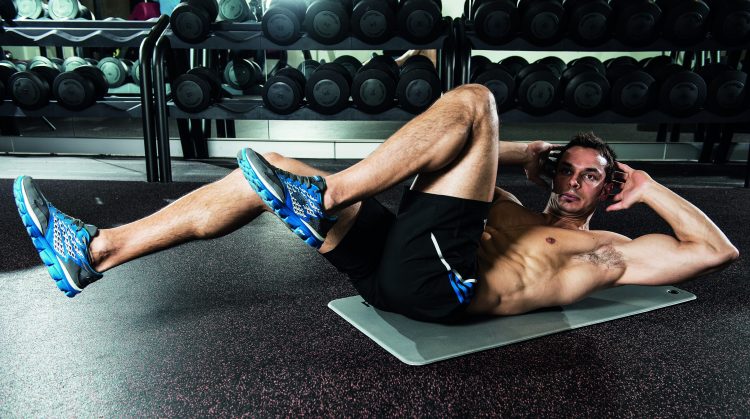
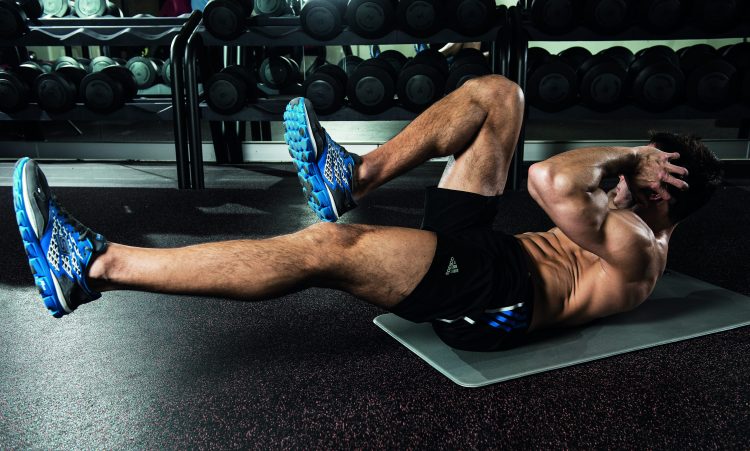
| Recommended reps | 10-12 |
| Recommended sets | 3 |
Why we like the bicycle crunch:
The bicycle crunch is an exercise you can perform at a range of intensities, and intensive sessions are perfect for torching calories. As well as burning belly fat, it’s a go-to exercise for building core strength and providing impressive abdominal definition.
How to do the bicycle crunch:
- Lie on your back with your knees bent and your hands touching your temples
- Crunch and twist your torso to move one elbow towards the opposite knee
- Maintain tension on your abs and repeat this movement, alternating elbows and knees with each rep
Abs advice: For maximum benefit, make sure your shoulders leave the floor and don’t pull on your neck – so your abs do all the work.
12. Jackknife

| Recommended reps | 12 |
| Recommended sets | 4 |
Why we like the jackknife:
Also known as the ‘V-up’, the jackknife strengthens the upper and lower abnominal muscles, particularly the rectus abdominis and transversus abdominis. It also works your glutes, calves, thighs and chest and helps improve posture and flexibility.
How to do the jackknife:
- Lie on the floor with your legs straight and your arms extended behind your head
- Contract your abs and raise your arms and legs until they touch above your stomach
- Return to the start
Abs advice: Keep your back in a neutral position and as you raise your arms and legs, hold the position for three seconds.
13. Gym ball side plank
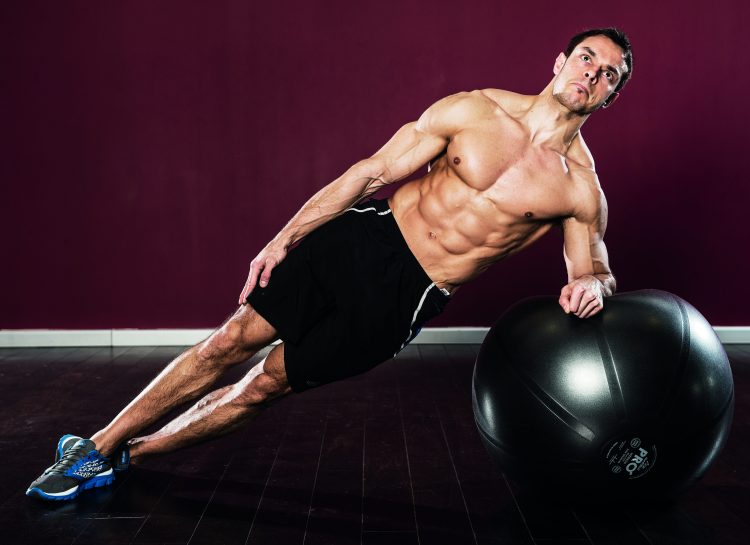
Recommended time: 30-60 secs
Why we like the gym ball side plank:
The gym ball side plank is a core-strengthening exercise that targets the obliques and helps improve hip mobility and stability.
How to do the gym ball side plank:
- Get into a side plank position, with your lower arm resting on a gym ball and your other arm flat against your side
- Hold a straight line from head to heels
Abs advice: Keep your core braced and don’t allow your hips to sag.
Anatomy of the abs
Your abdominals are a collection of important postural muscles that are responsible for flexing your spine forwards, as when doing a crunch. The group also assists with breathing, stabilizing the torso during exercise and protecting your internal organs from impact.
When people talk about the abs they’re often referring to the rectus abdominis, a paired muscle that runs vertically on each side of the front of the abdomen, separated down the middle by a band of connective tissue called the linea alba, or white line. It’s this line, and those that run horizontally across this muscle group, that creates the six distinct parts of a ‘six-pack’. In fact, there are four vertical sections, but the bottom pair are just above the pubic bone and are therefore not typically visible.
The abs are like every other muscle group in that they need to be targeted directly from a variety of angles for maximum muscle growth. Heavy compound lifts, such as the squat, deadlift and overhead press, are among the best moves because they’re highly effective at burning fat and require your core to work hard. That’s why this training programme includes many different moves to constantly challenge your abs from every possible angle.
Muscles of the abs
Rectus abdominis
The rectus abdominis is a long, flat muscle that runs down the front of your stomach and is better known as your abs or six-pack. It’s an important stabilising muscle and is responsible for flexing your spine, as when performing a crunch. It also assists with breathing and has an important role in forcefully expelling air from the lungs. It also protects your internal organs.
External obliques
The external obliques are the largest and most superficial of the obliques, which run either side of the rectus abdominis. Their function is to pull the chest downwards. They also have limited actions in the flexion and rotation of the spine.
Internal obliques
The internal obliques lie under the external obliques. They have two major functions: as antagonists to the diaphragm to inhale and expel air from the lungs, and to rotate and bend the torso. This happens when the right internal oblique and left external oblique work together to flex and rotate the torso to bring the left shoulder towards the right hip.
Transverse abdominis
The transverse abdominis is the deepest muscle of this group, lying under the external and internal obliques, and stabilises your torso.
Related content:
- Bodyweight HIIT home workout
- Weights vs bodyweight: which is better?
- 20-minute bodyweight abs workout
Head over to our sister site, Women’s Fitness UK, to discover the best abs exercises for women

